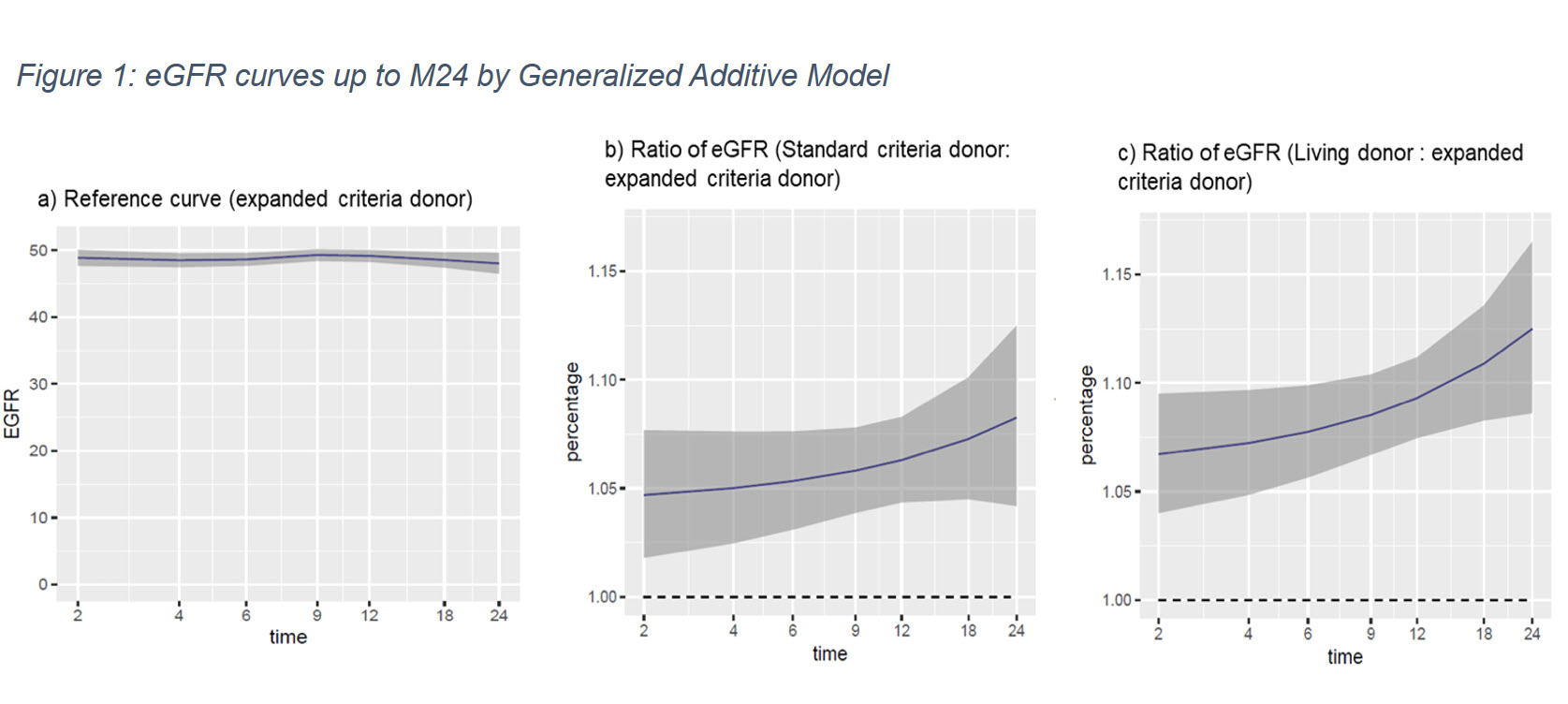Determining Prognostic Factors of Longitudinal Estimated Glomerular Filtration Rate Curves Using Machine Learning Techniques
TRANSFORM Study Group, Basel, Switzerland
Meeting: 2020 American Transplant Congress
Abstract number: A-088
Keywords: Glomerular filtration rate (GFR), Kidney transplantation
Session Information
Session Name: Poster Session A: Kidney Immunosuppression: Novel Regimens and Drug Minimization
Session Type: Poster Session
Date: Saturday, May 30, 2020
Session Time: 3:15pm-4:00pm
 Presentation Time: 3:30pm-4:00pm
Presentation Time: 3:30pm-4:00pm
Location: Virtual
*Purpose: Various factors related to donors and recipients are integrally associated with post-transplant outcomes. Using machine learning (ML) techniques, we determine the possible prognostic factors that can impact and predict the renal function outcome, i.e. estimated glomerular filtration rate (eGFR) for patients in the TRANSFORM study.
*Methods: Around 20 prognostic factors related to donor and recipient characteristics, treatment received, eGFR at month (M) 1, transplant procedure, and other variables were considered. Generalized Additive Models (GAM), regression tree, and random forest were the ML methods explored to determine important predictors of eGFR. The eGFR curves were modeled as a function of multiple variables using forward stepwise GAM (FwdGAM) to determine the important factors. Interpretable effect plots of mean eGFR over time and the ratio between two subgroups were generated in addition to regression trees for eGFR at M12. Multivariable analysis for eGFR at M24 is currently ongoing.
*Results: Using the best forward stepwise GAM regression model, three important prognostic factors to predict eGFR were determined: eGFR at M1, donor age, and donor type. Reference curve of eGFR over time for Expanded Criteria Donor (ECD) showed the mean eGFR curve was below 50 from M2 onward (Figure 1a). However, the ratio of eGFR curves for the Standard Criteria Donors (SCD) and Living Donors (LD) indicated that both mean eGFR curves are higher (SCD: 5-8% and LD: 7.5-12%) versus the ECD (Figure 1b & 1c). Regression tree and random forest methods found these same prognostic factors as top predictors of eGFR at M12.
*Conclusions: GAM provided an attractive and interpretable framework to model eGFR curves. The final eGFR predictive model included variables related to the donor (donor age and type, and very early eGFR). Regression tree, random forest, and FwdGAM gave consistent lists of factors predictive of eGFR. The ongoing multivariable analysis would be prudent to confirm the findings from the ML techniques.
$$MISSING OR BAD IMAGE SPECIFICATION {1}$$
To cite this abstract in AMA style:
Bernhardt P, Han J, Kormaksson M, Pascual J, Berger S, Chadban S, Legendre C, Oberbauer R, Oppenheimer F, Sommerer C, Gawai A, Tedesco H. Determining Prognostic Factors of Longitudinal Estimated Glomerular Filtration Rate Curves Using Machine Learning Techniques [abstract]. Am J Transplant. 2020; 20 (suppl 3). https://atcmeetingabstracts.com/abstract/determining-prognostic-factors-of-longitudinal-estimated-glomerular-filtration-rate-curves-using-machine-learning-techniques/. Accessed December 14, 2025.« Back to 2020 American Transplant Congress

